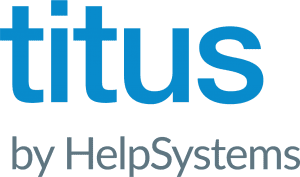
The rapid rise in remote working under COVID-19 delivered far-reaching changes in how we do business. It has significant implications for CISOs, Compliance and Data Governance Officers. Accessibility, bandwidth, data volumes and usage demands surged under the pandemic. The challenge to keep data safe, whilst facilitating access and usability for multiple external user groups, became a core concern for data leaders. As data from multiple and often external sources continues to grow in volume, issues around data management, control and protection are a priority concern for business.
Forward-thinking companies, with technology development strategies already in place, quickly adapted under the pandemic. They acted on the clear business opportunity to “reinvent” data protection and flexible user access. Those organisations that maintained a fixed mindset on data protection are today finding it more difficult to recover and harder to provide their users with the tools required to do their jobs safely.
Supporting the permanent shift to remote working
The expectation is that post-pandemic remote working will almost double from pre-pandemic levels. It means maintaining a centrally driven robust data governance strategy that prioritises data security and regulatory requirements whilst ensuring appropriate and safe access to information, whenever and wherever needed, is a must. Businesses must recognise the data protection lessons learnt. They must move beyond short-term security compromises to a future-proofed data governance protocol that is technology and user-centric.
As a starting point, data protection must adapt to the new workplace environment. In the post-pandemic hybrid working environment, employees will split their working hours between home and office permanently. So organisations must look at the impact of high-volume remote working and its impact on existing security controls.
Reinforcing corporate policies around data creation and linked protection facilities, such as Data Loss Prevention (DLP) technology, will be critical to facilitating large remote workforces, reducing accidental failings, and ensuring that data transfer is confined to authorised recipients only. Organisations must identify the true value and protection requirements of data. It will enable them to make intelligent decisions on how to handle it safely. All data must be classified so it can be managed and handled appropriately, with robust classification facilities.
Automating data classification to build-in efficiency and security
Businesses that adapt best to the post-pandemic era will use automation, data-driven digital access technologies and the cloud to effect improved operations and efficiencies. All organisations will need to focus on the results-driven benefits that new and extended working practices can provide. Enabling safe user and data access must be at the heart of these strategies.
Automation helps improve processing efficiency and reduces the burden on frontline security and data management staff. Data classification tools will help drive integration and automation. They will enable organisations to protect their data by applying appropriate security labels. Additionally, they will also help educate users to understand how to treat different types of data with different levels of classification and sensitivity.
Establish a data security culture and educate employees
Businesses must apply and enforce PII data protection rules to safeguard personal data. Data leaders must identify PII, classify its sensitivity and level of threat if it were lost in any way. They also need to apply acceptable usage policies and appropriate levels of protection. Businesses should establish a PII culture and introduce it gradually. Base it on buy-in and defined responsibilities that are recognised and accepted from the top down.
Employees play a vital role in ensuring that the business maintains a strong data privacy posture. Therefore, working with stakeholders and users to understand data protection requirements and policies is key. Conduct security and data protection education company-wide. It must also exist at a level that is workable and sustainable.
Create regular security awareness training and a company-wide inclusive security culture within the firm. It will ensure that data security becomes a part of everyday working practice, embedded into all actions and the very heart of the business.
A robust data protection protocol is critical for all organisations, especially as we move beyond COVID-19 into the new normal. Delivering optimal operational efficiencies, data management, and data classification provision under post-pandemic budget constraints will be an ongoing business-critical challenge. Data leaders must be selective. They should identify the combination of technologies, processes and people investments that will deliver the greatest security controls to meet new productivity targets. These must extend and support remote-working strategies and adequately support the ever-increasing volumes of data, now and into the future.
To read more, please see HelpSystems’ white paper, “Businesses Need a Smarter Approach to Data Protection”.


























